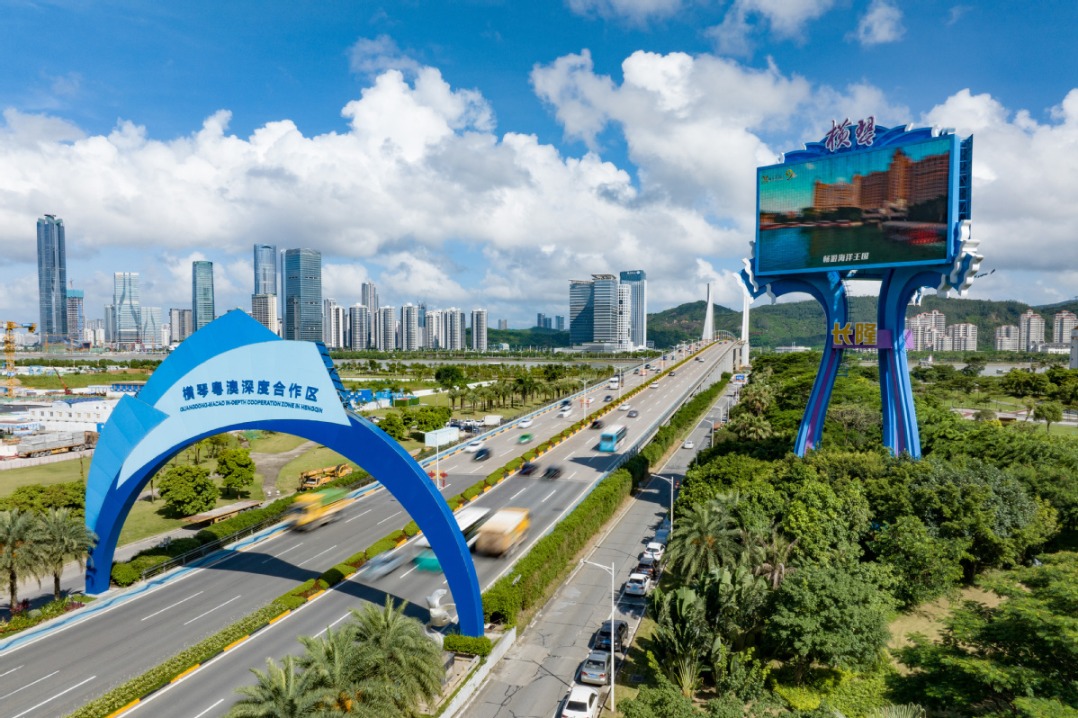Grand Canal, globalization and China's openness


As someone who came to China a decade and a half ago, I have witnessed arguably China's most transformational period since the country launched its reform and opening up in 1978. Since then China has leapfrogged Japan and become the world's second-largest economy. The country now boasts the world's largest number of internet users, at more than 800 million. Chinese tourists are now making an increasing number of overseas trips, registering a 1,380 percent increase since 2000, according to some accounts.
While we shouldn't question the importance of these achievements and should acknowledge them when discussing China's development, oftentimes we overlook how the country's cultural heritage helps it connect with the wider world. The Grand Canal is a fine example.
While there are almost innumerable cultural landmarks rich in heritage in China, the Grand Canal is unique in that not only did it help unify China, it signifies one of the most important tenets of our current globalization: the thought that we are better off forming networks across great distances.
As a foreigner, people often ask me questions about China, and I'm often asked about the Grand Canal. Although I have spent a lot of time thinking about the canal, there are two seemingly simple questions I still can't answer easily. The first: "What is your favorite place on the Grand Canal?"; the second: "How does a foreigner living in China see the Grand Canal?" As straightforward as the questions may appear, they raise complex issues, and their answers deserve thought.
I have visited many places, spanning several provinces, along the Grand Canal for work. Some places of course stand out as particularly attractive. A significant number of cities and local government agencies are currently working on large-scale renovation and restoration projects on the canal. Many are visually striking and it is exciting to see the Grand Canal play an increasing role in so many people's lives. Not every stop on the canal however can or should be restored. Away from the canal's well-visited areas it is still possible to find an undiscovered gem or secret corner you can enjoy in solitude.
So which is better: the developed areas of the canal or those that preserve its natural beauty? The question is based on something of a misconception – , it should be possible to enjoy different parts of the Grand Canal for different reasons, just as it's possible to enjoy the Pyramids in Egypt or the Grand Canyon in the USA. These are also complex and multi-faceted sites, just like the canal. They do not however represent systems of communication that hold civilizations together. We must further bear in mind that it was a fluke of nature that brought the Grand Canal into being. Or better put, it was the result of a clash between nature and civilization.
China's rivers tend to flow west to east. Yet the societies it built needed a north-south axis of communication. Had history run a different course, or had nature given China an easily navigable north-south river, the Grand Canal would not have been needed. I am not sure however that China would've been better off in that case, since the country would've missed out on the unifying power of the canal, the human connections it helped create. So when people ask me about my favorite place on the Grand Canal, I answer that they are the places where you can clearly see that the Grand Canal was and is a system, one that – at no little cost and risk – helped hold China together.
This is why I think there is no reason for foreigners to view the Grand Canal differently to the Chinese. Not only did the canal's construction require people from all over China to come together, but the influence of foreigners is writ large throughout its history. Of course foreigners' influence was not always positive. The Grand Canal’s history itself however is marked by ups and downs.
The real difference is not between insiders and outsiders, but between those who want to develop major communication projects, like the canal, and those who think the negatives of such projects outweigh the positives. I think they are worth the effort, even though we should not expect success to come easily. One of my goals in writing about the Grand Canal past and present was to encourage the creation of "globalized Grand Canals" in the future.
How do we achieve these globalization goals? A major advantage of considering the Grand Canal is how the canal allows us to reflect on ways our future globalization can deliver more benefits than a system confined to one country could ever achieve. I welcome that conversation. In the meantime, here are two smaller, concrete suggestions about how to make the Grand Canal an ever more significant presence in our lives.
- Although tourist boats regularly travel the Grand Canal, I think we should educate the public on how cargo is moved the length of the canal. The Grand Canal remains an important channel for the shipment of goods, and the crews that travel it have built a vibrant sub-culture of their own. We should enable the public to experience life on these boats, deepening public understanding of the Grand Canal.
- The Grand Canal is an ideal venue for China to meet the outside world. We should look,to bring people from across the world to the canal, and help them understand what it symbolizes. As China itself is undergoing an explosion of creativity, the Grand Canal is a fitting place to showcase the best of the country's innovation and to grow further global networks.
The Grand Canal is not just of the past and present. It is also of the future, and it belongs to all of us.
The author is an associate professor at Zhejiang University and currently teaches in its global engagement program. His book, Postcards from China: Travels along the Grand Canal, was published by Zhejiang University Press on December 7, 2018.


































